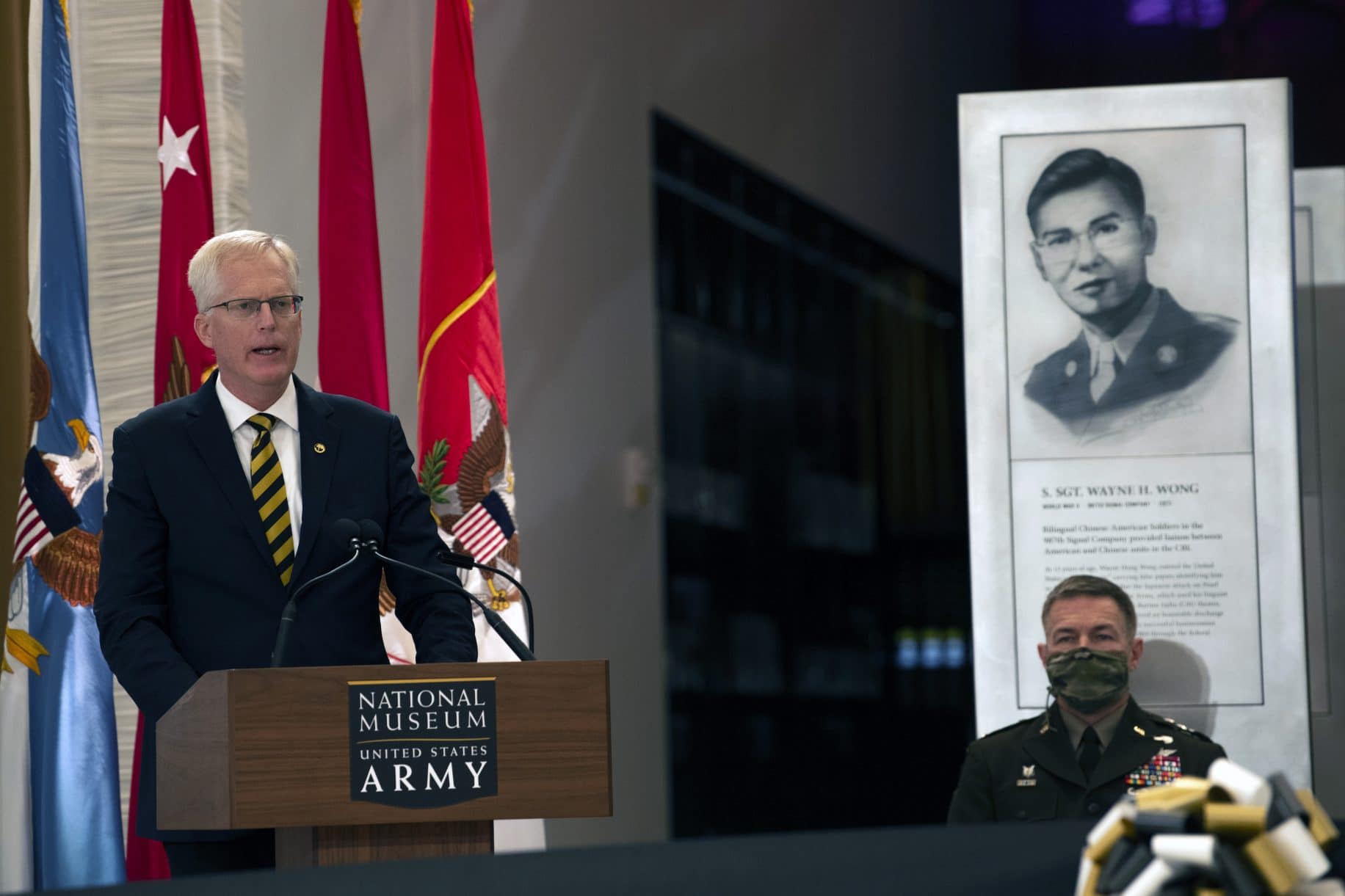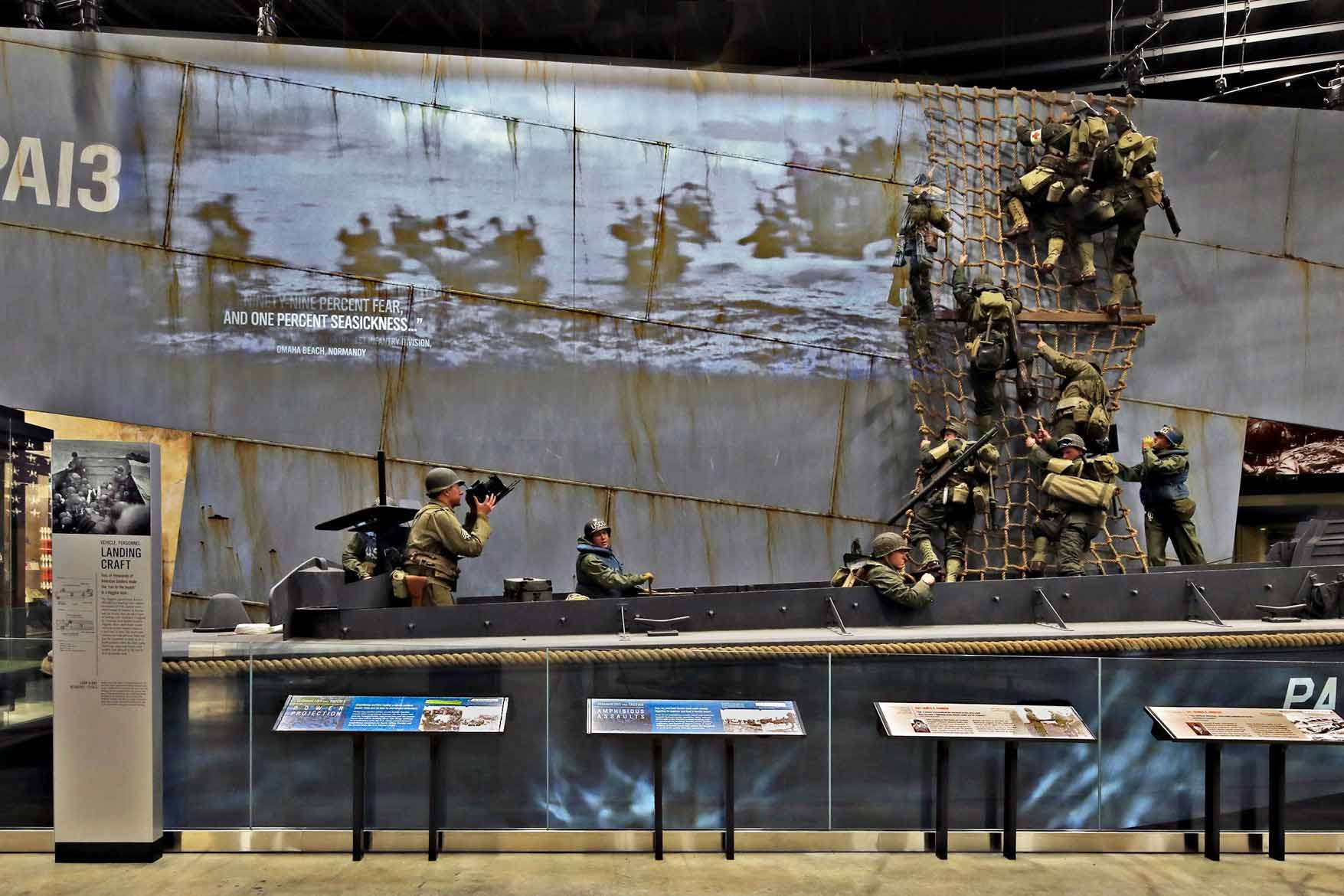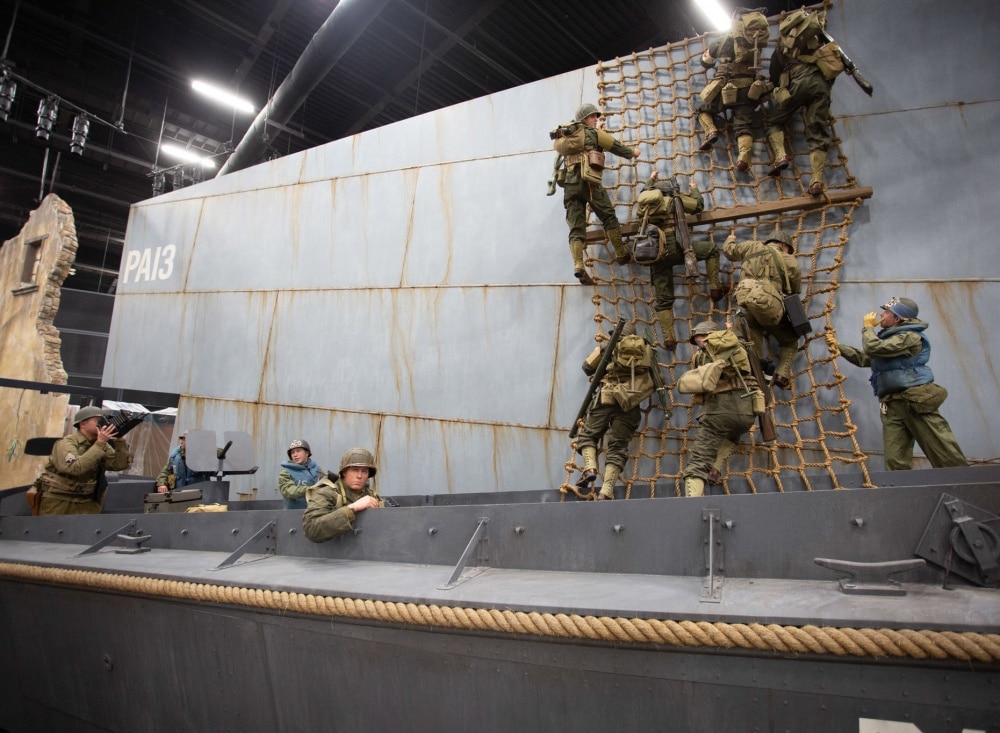The Army “has been a force for profound good in our world,” said Acting Defense Secretary Christopher C. Miller, who spoke at the museum’s opening event.
“From the fields of Lexington [and] Concord to the hills of San Juan and from the cliffs of Normandy to the Korangal Valley, more than 30 million brave men and women have donned the Army uniform to fight for freedom at home and abroad,” Miller said. “For more than 240 years, they made innumerable contributions to our nation and the world — not just in combat, but also in humanitarian assistance, disaster relief, international cooperation and other vital missions. Their feats are enshrined throughout this museum.”

Acting Defense Secretary Christopher C. Miller (DoD photo by Lisa Ferdinando)
Construction on the 185,000-square-foot museum, which is just a 16-mile drive from the National Mall in Washington, began in 2017. The museum is a joint venture between the Army and the Army Historical Foundation.
The museum includes the “Soldiers’ Stories Gallery,” which features pictures and biographical information for more than 40 soldiers from all periods in Army history.

Acting Secretary of Defense Christopher C. Miller (Lisa Ferdinando, DOD)
Additionally, various galleries cover Army involvement in significant periods of U.S. history. These include the Revolutionary War and the founding of the United States, the period leading up to and including World War I, World War II, the Cold War and the “Changing World Gallery,” which chronicles the period from 1990 to today.
Special features of the museum include a theater; a gallery that focuses on the Army’s relationship with civilian society; an immersive experience that allows visitors to attempt to experience what trench warfare was like during World War I; and a gallery that documents the experience of World War II’s Nisei soldiers, who were born in the U.S. to parents who emigrated from Japan.
In all, there are 11 galleries and nearly 1,390 artifacts available for visitors to see.
“The exhibits shown here promote a deeper understanding and appreciation of the Army’s achievements,” Miller said. “They illuminate the hard-earned lessons of war and tell us why we must continue to adapt and lead in a world fraught with danger. And the personal narratives woven throughout these halls will encourage and inspire the next generation of soldiers, who will lead the world’s finest fighting force to even greater heights in the future.”

Higgins Boat landing craft that is loading up for the landings in Normandy, France, on D-Day. (Duane Lempke, Army)
Chairman of the Joint Chiefs of Staff Army Gen. Mark A. Milley said the museum will finally allow visitors to understand what the Army does to protect American freedom.
“We cannot truly appreciate the sacrifice of our soldiers, from the Continental Army to today, or comprehend what they went through unless we see the weapons they used, feel the uniforms they wore, hear the stories they told, or read the letters they wrote,” he said.
And while visitors of today will never experience what soldiers of the past have gone through fighting America’s wars, Milley said, the National Museum of the United States Army will allow them to see all that history in one place for the first time.

Exhibit at the National Museum of the United States Army at Fort Belvoir, Virginia. (New York National Guard photo/Released)
“[We] will never fight through the haze and the mustard gas of the Meuse-Argonne. We’re not going to hear the whiz and the snap of their … rounds while assaulting the last 100 yards of Omaha Beach. And, no, we’re not going to suffer the blistering cold of the Chosin Reservoir or smell the smoke [of] the la Drang Valley,” he said. “But we can come here — we can see the relics and hear the stories through the eyes and the voices of the individual soldiers who endured so much for the cause of freedom and their unrelenting devotion to the Constitution of the United States.”
Those wishing to tour the museum can do so by first visiting the website at www.thenmusa.org and ordering a free ticket.
This press release was originally published by the U.S. Department of Defense.



